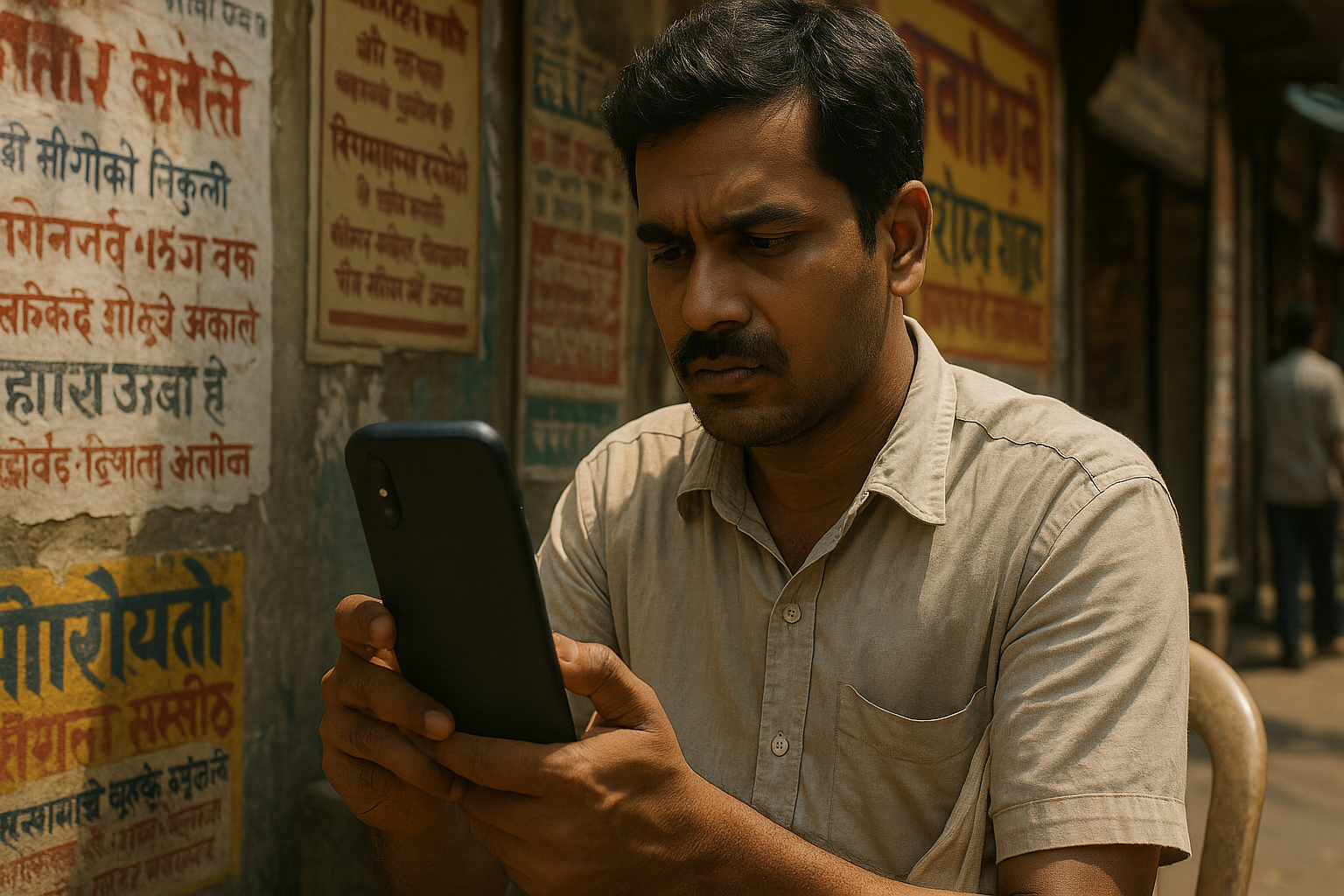There’s a strange irony in asking ChatGPT in English about Sanskrit grammar. Or getting directions to a gaushala in Meerut from a cloud server in Oregon. Funny, yes. Harmless? Not quite.
Because the deeper we wade into the AI era, the clearer one truth becomes: if India doesn’t build its own intelligence, it’s going to get algorithmically colonized.
Not by soldiers or spices this time — but by code. Silent, global, and often clueless about what “jugaad” even means.
Welcome to the real battleground of the 2020s: cultural sovereignty through artificial intelligence. This isn’t just about tech. It’s about tone, trust, and a nation’s right to speak, decide, and think in its own voice.
Why Imported AI Just Doesn’t Get Us
Ever tried typing a Hinglish sentence into Google Translate? It breaks down faster than a scooter on a Ladakh road. “Yeh toh theek nahi hai yaar” becomes something like “This is not that friend.”
Western AI models weren’t trained on our cadence, our emotions, our quiet and our chaos. They don’t know that in India, silence in a conversation doesn’t mean disinterest—it means your dad is about to explode. They don’t know that “done” can mean “almost done,” “not even started,” or “I forgot and I’m lying to save face.”
Language is the obvious one. But the gap runs deeper:
- US-trained facial recognition systems struggle with Indian complexions
- Global AI hiring tools often mark Indian accents as “low confidence”
- Chatbots don’t understand caste nuance, arranged marriage logic, or why half the country doesn’t want to “relocate” because maa nahi maanegi
And when decision-making algorithms don’t get the culture, they get the consequences wrong. Injustice by automation. At scale.
What Swadeshi AI Looks Like
This isn’t about waving flags or building everything from scratch. Swadeshi AI doesn’t mean isolation. It means relevance. Context. And control.
Homegrown AI should:
- Speak our languages natively (not just translate them)
- Understand regional biases, not just Western “fairness” metrics
- Be trained on Indian datasets, not repurposed Reddit threads
- Handle desi decision-making: not just right vs wrong, but “kya log kya kahenge” vs “kaam ban raha hai”
And the good news? It’s already happening.
The Quiet Rise of Desi Intelligence
Startups and labs across India are building AI that doesn’t just function—it feels local.
- Sarvam AI is training language models rooted in Indian expression, emotion, and grammar—not anglicized leftovers
- Karya, a data-labeling movement, pays rural workers fair wages to build datasets in Marathi, Kannada, Bhojpuri
- BharatBot helps small businesses across UP and Bihar manage customer queries in colloquial Hindi—complete with emoji logic
- Platforms like PokerSingh use behavior modeling on Indian player psychology, not generic Western poker theory. Which, let’s be honest, doesn’t work in a country where people call all-ins just to teach their cousin a lesson.
Even Telegram-based learning bots built by Indian devs are now doing what fancy edtech can’t: teaching in regional dialects, adjusting tone for caste/gender dynamics, and handling real-time code switching between Hindi, English, and “bro.”
Why Swadeshi AI Isn’t Optional — It’s Strategic
Here’s the uncomfortable part. AI doesn’t just “predict” or “support” human behavior. It starts to shape it.
If the models deciding credit scores, hiring outcomes, or even dating suggestions are trained on foreign assumptions, then slowly… quietly… our decisions start drifting.
Not by force. But by design.
You’ll buy what you’re shown. You’ll trust what sounds “fluent.” You’ll adjust to what the machine rewards.
And before you know it, you’re living in a behavioral export model—with better UX but fewer choices.
That’s why building desi AI isn’t about beating the West. It’s about protecting cognitive freedom.
The Risks of Inaction: Imported Intelligence, Local Damage
Let’s paint the nightmare scenario.
A startup in Bengaluru uses a Silicon Valley recruitment AI to screen resumes. The model was trained on Western success paths. It starts filtering out names like “Govind” and “Preeti” because they don’t match the training data’s high performers named “Alex” and “Emily.”
Or a credit-scoring algorithm flags rural borrowers as “high risk” not because of actual behavior, but because the model was trained on urban transaction patterns. Congrats—you just built bias at scale.
Even recreational platforms aren’t immune. Questions like is pokerbaazi rigged arise partly because of opaque algorithmic behavior. If the tech isn’t transparent, it doesn’t earn trust.
And when platforms built for India start behaving like foreigners with GPS, people notice. They stop engaging. Or worse, they game the system.
Building Swadeshi AI Isn’t Just Noble — It’s a Business Superpower
This isn’t charity. It’s competitive advantage.
The Indian market isn’t just large. It’s layered. Emotional. Fast-moving. Predictable only in its unpredictability.
If you can train AI that thrives in this chaos? You can deploy it anywhere.
From ai coaching centres in Hyderabad building adaptive curriculums in Telugu, to poker circle strategy engines mapping desi bluff patterns during Diwali tournaments, the future belongs to those who don’t just serve India — they understand her.
Final Thought: AI That Looks Like Us, Thinks With Us, Learns From Us

Mahatma Gandhi didn’t talk about artificial intelligence. But if he did, I like to think he’d say something like this:
“Build machines that serve your village, not silence it.”
Swadeshi AI isn’t nostalgia. It’s necessity. It’s how we stay rooted while going global. How we protect nuance in a world rushing toward uniformity. How we make sure the machine knows when “haan” doesn’t mean yes.
Because if we don’t train the future to speak like us, think like us, and feel with us…
Someone else will.
And they’ll get it wrong.

















